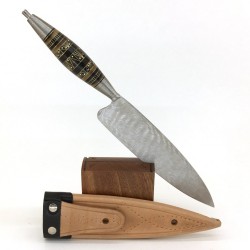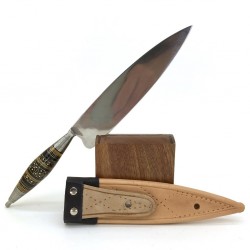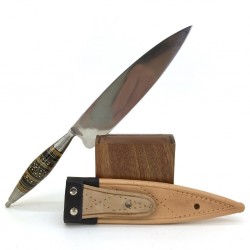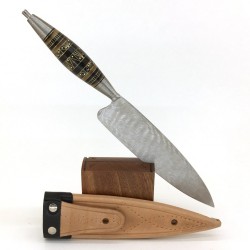Canary knife, as a craftsmanship of the island of Gran Canaria, with sheets of different metals carbon steels and stainless steels. Choose the model you like the most, in a unique piece.
The manufacturing process is totally artisanal, and preserves the essence of yesteryear, so that the final result is the same and thus preserves the traditional of its origin.
Canary Knives
Buy Canarian Knife
At Canarias Shop, we have a unique collection to buy the authentic Canarian knife, handcrafted as it should be, and which forms part of the typical craftsmanship of the Canary Islands. It is a symbol of a land that captures the craftsmanship of its ancestors to create unique pieces.
Origin of the Canarian Knife
In the blacksmiths of Guía and Telde, by the end of the 18th century, there is already evidence of their production by master metal artisans, and it is likely that the first Canarian knives were forged there.
It is also known by the name Naife Canario, very likely deriving from the English word "knife," used in the last decades of the 20th century. Another possible reason for this name could be that it derives from the Portuguese "naifa," which means knife or blade.
Raw Materials of the Canarian Knife
Materials that form the blade of the Canarian knife:
Stainless steel (or white blade)
Carbon steel (black or Canarian blade)
Damascus steel
Alpaca
Silver
Gold
Materials that form the handle of the Canarian knife:
Cow horn, goat, and ram (black, white or cream, and blond or yellowish), even ivory, etc.
High-quality resins like ebony, bone, and amber.
Wood for the filling of the caps and metals such as gold, silver, alpaca, brass, nickel, and copper.
Manufacture of the Canarian Knife
The Canarian knife is made by a master craftsman in a careful, handmade process, even in all phases of its production.
The blade and tang are forged, and from this point, the horn is prepared, always ensuring it is cured, then cut and heated for pressing. The resulting pieces are filed and drilled.
The craftsman creates a unique design and, based on it, assembles the pieces, filing them to round their shape, disassembling the handle in the correct order, and making cuts in the pieces to inlay the decorative elements.
The decoration can be very varied, with different geometric shapes or decorative styles characteristic of these Canarian knives.
When the pieces are finished, the final assembly is done by riveting with a cap called a knob, which is usually decorated. The roughness is removed with a file, and finally, it is polished and shined.











